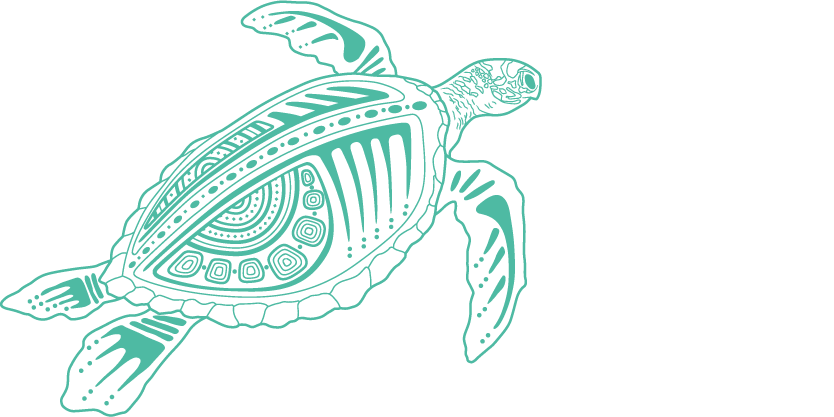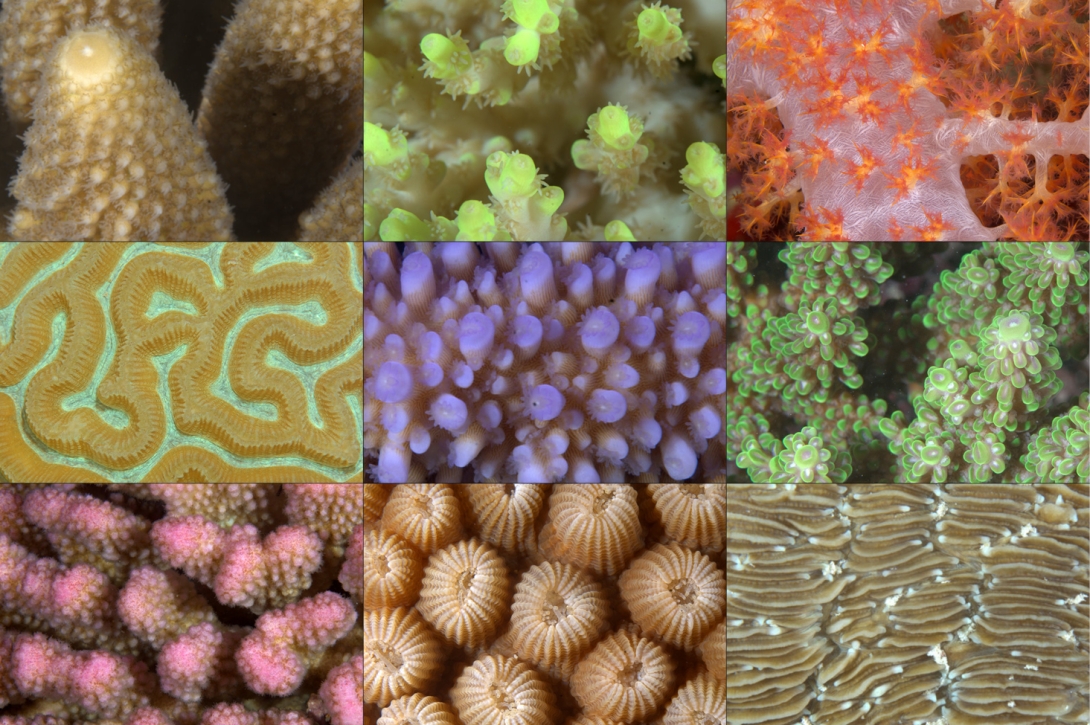21.
Matias, A.M.A., Popovic, I., Thia, J.A., Cooke, I.R., Torda, G., et al. 2023, Cryptic diversity and spatial genetic variation in the coral Acropora tenuis and its endosymbionts across the Great Barrier Reef, Evolutionary Applications 16(2): 293-310.
161.
Australian Institute of Marine Science 2023, Long-Term Monitoring Program Annual Summary Report of Coral Reef Condition 2022/23, Townsville.
167.
Great Barrier Reef Marine Park Authority, Australian Institute of Marine Science and CSIRO 2024, Reef snapshot: summer 2023-24, Great Barrier Reef Marine Park Authority, Townsville.
182.
Australian Institute of Marine Science 2022, Long-Term Monitoring Program Annual Summary Report of Coral Reef Condition 2021/22.
185.
Thompson, A., Davidson, J., Logan, M. and Thompson, C. 2023, Marine Monitoring Program Annual Report for Inshore Coral Reef Monitoring: 2021–22. Report for the Great Barrier Reef Marine Park Authority, Townsville.
-
190.
Thompson, A., Davidson, J., Logan, M. and Thompson, C. 2024, Marine Monitoring Program: Annual report for inshore coral reef monitoring 2022–23. Report for the Great Barrier Reef Marine Park Authority, Townsville.
-
289.
Wallace, C.C., Crowther, A.L. 2019, Hexacorals 1: sea anemones and anemone-like animals (Actiniaria, Zoantharia, Corallimorpharia, Ceriantharia and Antipatharia), in The Great Barrier Reef: Biology. Environment and Management, ed. M.K. P. Hutchings O. Hoegh-Guldberg, Commonwealth Scientific and Industrial Research Organisation, pp. 257-266.
290.
Wallace, C.C. 2019, Hexacorals 2: reef-building or hard corals (Scleractinia), in The Great Barrier Reef: Biology, Environment and Management, ed. M.K. P. Hutchings O. Hoegh-Guldberg, Commonwealth Scientific and Industrial Research Organisation, Australia, pp. 267-282.
291.
Davies, S.W., Gamache, M.H., Howe-Kerr, L.I., Kriefall, N.G., Baker, A.C., et al. 2023, Building consensus around the assessment and interpretation of Symbiodiniaceae diversity, PeerJ 11: e15023.
292.
Bridge, T. C. L., Cowman, P. F., Quattrini, A. M., Bonito, V. E., Sinniger, F., Harii, S., Head, C. E. I., Hung, J. Y., Halafihi, T., Rongo, T., Baird, A. H. 2023, A tenuis relationship: traditional taxonomy obscures systematics and biogeography of the ‘Acropora tenuis’ (Scleractinia: Acroporidae) species complex, Zoological Journal of the Linnean Society: 1-24.
293.
Ortiz, J.C., Pears, R.J., Beeden, R., Dryden, J., Wolff, N.H., et al. 2021, Important ecosystem function, low redundancy and high vulnerability: The trifecta argument for protecting the Great Barrier Reef's tabular Acropora, Conservation Letters 14(5): e12817.
294.
Kerry, J.T. and Bellwood, D.R. 2012, The effect of coral morphology on shelter selection by coral reef fishes, Coral Reefs 31: 415-424.
295.
Cadotte, M.W., Carscadden, K. and Mirotchnick, N. 2011, Beyond species: functional diversity and the maintenance of ecological processes and services, Journal of Applied Ecology 48(5): 1079-1087.
296.
Marshall, P.A. and Baird, A.H. 2000, Bleaching of corals on the Great Barrier Reef: differential susceptibilities among taxa, Coral Reefs 19: 155-163.
297.
Laxton, J.H. 1974, Aspects of the ecology of the coral-eating starfish Acanthaster planci, Biological Journal of the Linnean Society 6(1): 19-45.
298.
Alderslade, P., Fabricius, K. 2019, Octocorals, in The Great Barrier Reef: biology, environment and management, ed. M.K. P. Hutchings O. Hoegh-Guldberg, Commonwealth Scientific and Industrial Research Organisation, Australia, pp. 283-310.
299.
Horowitz, J. 2022, The taxonomy, biodiversity, and evolutionary history of black corals (order Antipatharia), PhD, James Cook University.
300.
Wagner, D., Luck, D.G. and Toonen, R.J. 2012, The biology and ecology of black corals (Cnidaria: Anthozoa: Hexacorallia: Antipatharia), Advances in Marine Biology 63: 67-132.
301.
Horowitz, J., Opresko, D., Molodtsova, T.N., Beaman, R.J., Cowman, P.F., et al. 2022, Five new species of black coral (Anthozoa; Antipatharia) from the Great Barrier Reef and Coral Sea, Australia, Zootaxa 5213: 1-35.
302.
Pontasch, S., Scott, A., Hill, R., Bridge, T., Fisher, P.L. and Davy, S.K. 2013, Symbiodinium diversity in the sea anemone Entacmaea quadricolor on the east Australian coast, Coral Reefs 33: 537-542.
303.
Bridge, T., Scott, A., Steinberg, D 2012, Abundance and diversity of anemone fishes and their host sea anemones at two mesophotic sites on the Great Barrier Reef, Australia, Coral Reefs 31: 1057-1062.
304.
Bridge, T.C.L, Done, T.J., Friedman, A., Beaman, R.J., Williams, S.B., Pizarro, O., Webster, J.M. 2011, Variability in mesophotic coral reef communities along the Great Barrier Reef, Australia. Marine Ecology Progress Series 428: 63-75.
305.
Epstein, H. E., Kingsford, M. J. 2019, Are soft coral habitats unfavourable? A closer look at the association between reef fishes and their habitat, Environmental Biology of Fishes 102: 479-497.
306.
Hoeksema, B.W. 2015, Latitudinal species diversity gradient of mushroom corals off eastern Australia: a baseline from the 1970s, Estuarine, Coastal and Shelf Science 165: 190-198.
307.
Bridge, T.C.L., Fabricius, K.E., Bongaerts, P., Wallace, C.C., Muir, P.R., Done, T.J. and Webster, J.M. 2011, Diversity of Scleractinia and Octocorallia in the mesophotic zone of the Great Barrier Reef, Australia, Coral Reefs 31: 179-189.
308.
Campoy, A.N., Addamo, A.M., Machordom, A., Meade, A., Rivadeneira, M.M., et al. 2020, The origin and correlated evolution of symbiosis and coloniality in scleractinian corals, Frontiers in Marine Science 7: 461.
309.
Sommer, B. 2022, Marginal reefs: distinct ecosystems of extraordinarily high conservation value, in Coral Reefs of Australia: Perspectives from Beyond the Water's Edge, eds S.M. Hamylton, P. Hutchings and O. Hoegh-Guldberg, CSIRO Publishing, Collingwood, pp. 139–143.
310.
Camp, E.F., Edmondson, J., Doheny, A., Rumney, J., Grima, A.J., et al. 2019, Mangrove lagoons of the Great Barrier Reef support coral populations persisting under extreme environmental conditions, Marine Ecology Progress Series 625: 1-14.
311.
Hughes, T.P., Kerry, J.T., Álvarez-Noriega, M., Álvarez-Romero, J.G., Anderson, K.D., et al. 2017, Global warming and recurrent mass bleaching of corals, Nature 543(7645): 373-377.
312.
Zawada, K. J. A., Madin, J. S., Baird, A. H., Bridge, T. C. L., Dornelas, M. 2019, Morphological traits can track coral reef responses to the Anthropocene, Functional Ecology 33(6): 962-975.
313.
Thompson, A., Costello, P., Davidson, J., Logan, M. and Coleman, G. 2021, Marine Monitoring Program: annual report for inshore coral reef monitoring: 2019 to 2020, Great Barrier Reef Marine Park Authority, Townsville.
-



